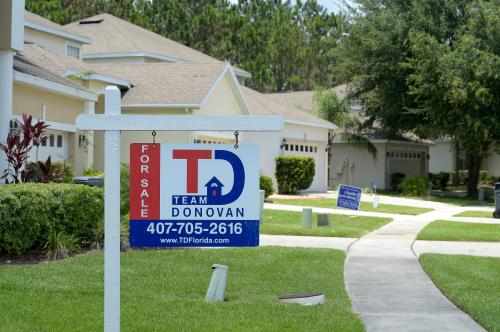These video clips are taken from a Future of the Middle Class Initiative and Center on Regulation and Markets event on May 8, 2019.
Housing is critical to well-being, providing a solid foundation for engagement in social and economic activities, including access to jobs, schools, and other place-based goods. According to our recent report, housing stress is both a national and local issue impacting the poorest residents, and increasingly the middle class as well. As the keynote speaker at our housing event on May 8th California State Senator Scott Wiener said, “it’s been very underappreciated how foundational housing is to everything else.” Over the course of the event – which also included two expert panels – five key lessons emerged on how to address challenges around zoning and land use at a local level:
1. Recognize who the dominating voices are in the local land use discussions
Boston University Assistant Professor Katherine Einstein turns a critical eye on neighborhood-oriented planning efforts and what they could mean for local land use discussions. She points out that “in practice what these neighborhood level institutions do is empower older white homeowners to dominate land use discussions and to use their power to stop and delay the construction of new housing.” We can begin to change the political consequences of land use regulations, she argues, by understanding more deeply the way that political power in these neighborhood-based decisions is distributed.
2. Be thoughtful about investments to protect existing residents
A recent political divide has opened up between YIMBYs (Yes In My Backyard) and PHIMBYs (Public Housing in My Backyard) phenomenon, with YIMBYs advocating for local market rate housing and PHIMBYs for local affordable housing efforts. At the root of the PHIMBY argument is a concern for the displacement of existing residents. When asked about this, Marion McFadden, Senior Vice President of Public Policy at Enterprise community Partners said “something that’s really new and different versus even maybe a decade ago is we are seeing low income communities and communities of color coming forward and say, ‘don’t come here. Don’t bring resources here. It’s going to be too detrimental to us over the long run.’” Policy solutions that focus attention on mitigating these economic can help to bridge this divide at the local level.
3. Consider higher-level government policy interventions to engage a broader array of stakeholders
The existing mechanisms for making land use changes are hyper-local, and as a result activate local homeowners’ engagement in the housing debate. While these local land use changes may have a large impact on residents, their effects do not rise to the same level of importance for businesses, unions, or other large entities who would otherwise weigh in on housing issues. “To the extent that policy can be made at a broad level and generalities, it can get these big interests,” Yale Law professor David Schleicher explains. He goes on to say that “by making changes that apply to a broad swath, you can really get at housing policy, housing price changes, which will then themselves activate big groups as opposed to neighborhood groups.” Engaging in policy change efforts at the city or state rather than neighborhood level could go a long way in engaging a wider array of stakeholders with more political power to advance housing supply conversations.
4. Allow communities to envision housing for themselves
In order to mitigate opposition to new local housing efforts, government agencies can – and should – engage community members in the early phases of the project to gauge their vision for the work. Boston University Professor Katherine Einstein described this approach by saying that “instead of asking people to say, here’s a project, do you think this is a good idea or a bad idea for this neighborhood? You instead bring people together.” “Neighborhood visioning processes” are happening in cities across the U.S. as a means of changing the way that we talk about building new housing, asking residents “what would you like to see in this neighborhood?” This early step could build neighborhood buy-in and minimize negative community response to a pre-created plan.
5. Federal government can lift and nudge toward beneficial housing and land use policy
“Part of the federal government’s power is to lift up what’s actually working and nudge other communities to emulate that,“ Marion McFadden said, when discussing the government’s responsibility to both elevate what is working in local housing efforts and to nudge other localities in that similar direction. The conversation went on to focus on federal government agencies, specifically HUD, as a beneficial scapegoat for local level elected officials who want to advance housing policy but fear not getting re-elected as a result. “This is a really big issue, that you worry, particularly if you’re in one of these smaller suburban cities or towns, that if you support a deeply unpopular zoning effort that you’re going to get voted out,” Katherine Einstein went on to say. By having clear guidelines on the direction that they want to see local and state-level housing efforts move, federal governments can positively influence local housing and land use policy.
All in all, it was a stimulating discussion. Check out the full recording here, sign up for our Class Notes newsletter, and watch this space for more work on housing and the middle class.
The Brookings Institution is committed to quality, independence, and impact.
We are supported by a diverse array of funders. In line with our values and policies, each Brookings publication represents the sole views of its author(s).








Commentary
Tackling zoning to help the middle class: 5 policy approaches
July 17, 2019